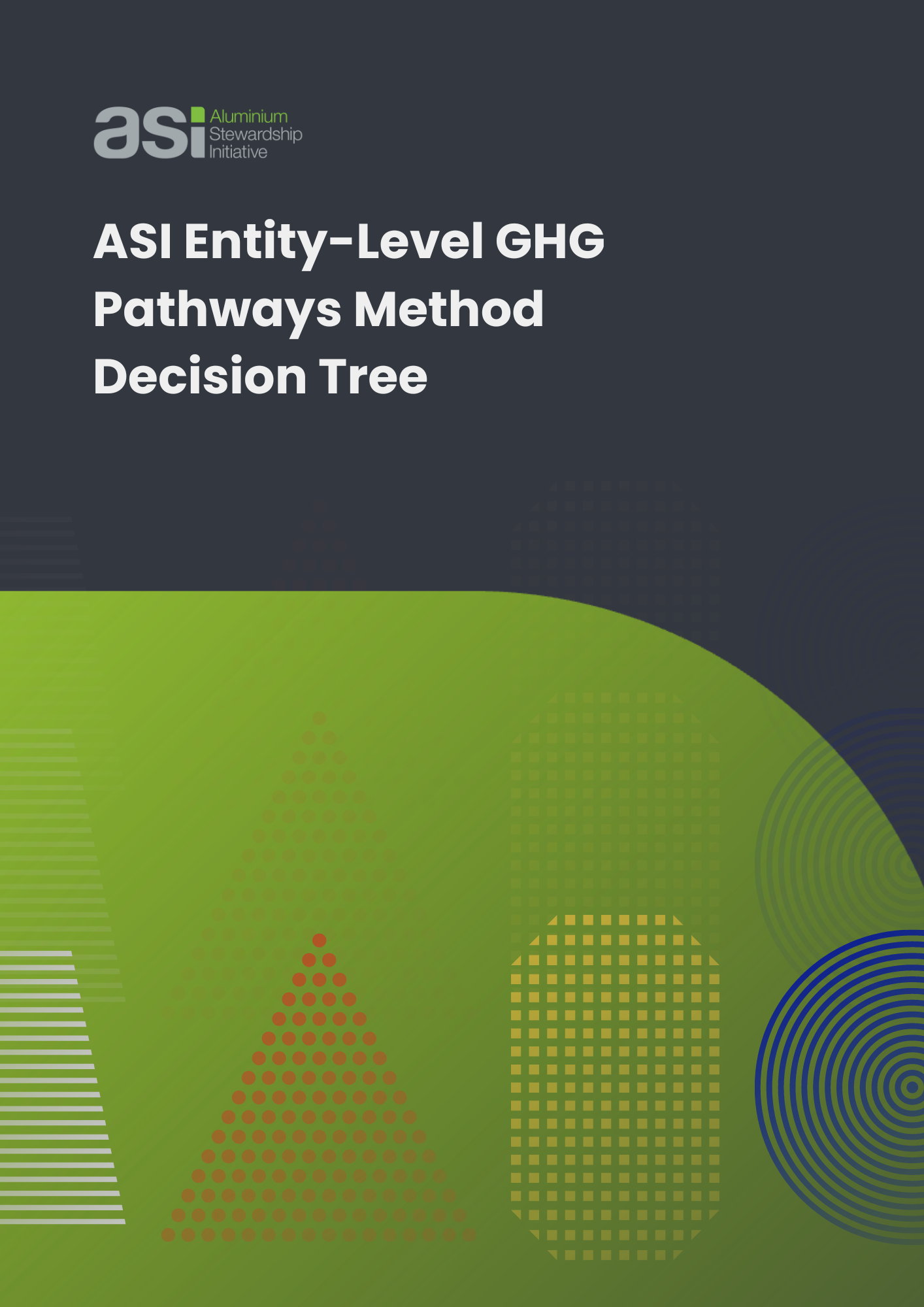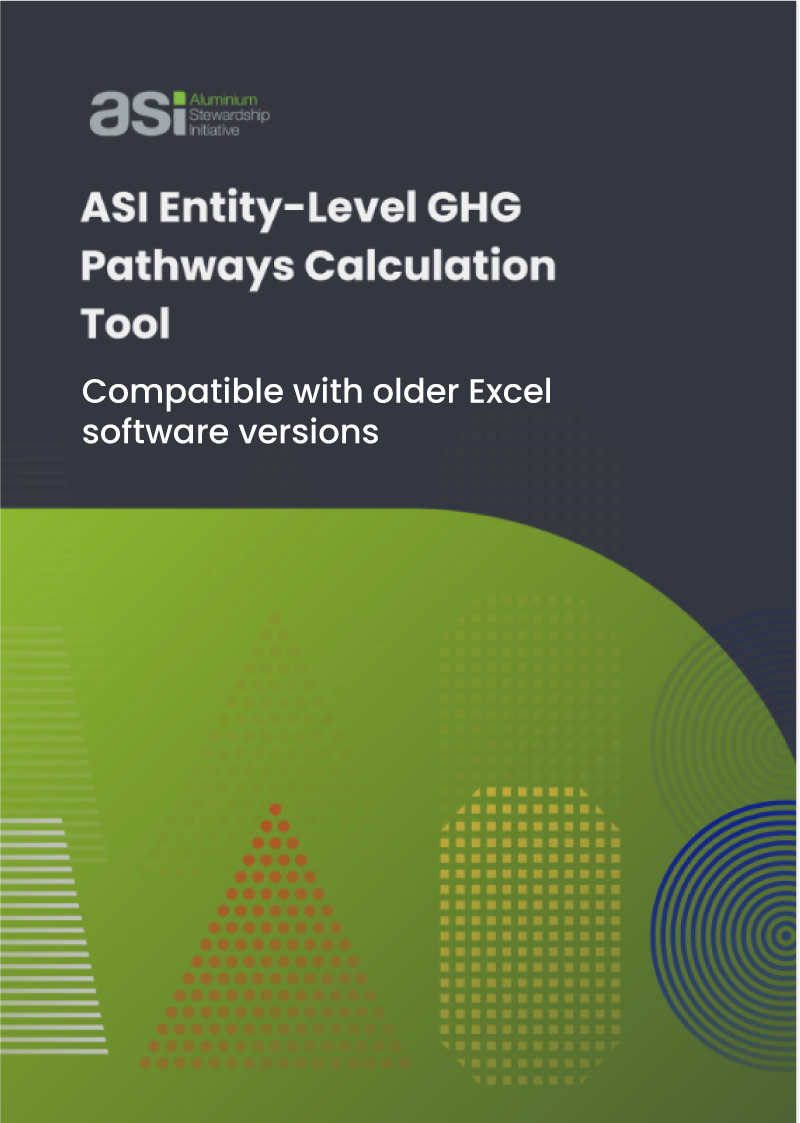Climate Change Mitigation Efforts in the Aluminium Sector: ASI’s Approach
Aluminium production is emissions-intensive, with the industry accounting for around 2% of global greenhouse gas emissions. Here’s an overview of how ASI is working to improve the aluminium industry’s climate performance.
8 November 2023
What’s the issue?
Climate change driven by greenhouse gas emissions poses an existential threat to ecosystems and communities across the globe. The aluminium production process is highly emissions-intensive, with the industry accounting for approximately 2% of global greenhouse gas emissions. Direct emissions largely stem from the energy used for alumina refining and aluminium smelting, while indirect emissions also arise along the value chain from raw material extraction, transport and product manufacturing.
As a material integral to modern life, from buildings and vehicles to packaging, the responsible production of aluminium is crucial. Unabated emissions from aluminium production will contribute to climate change through rising temperatures, shifting weather patterns and increased occurrence of extreme events. This threatens biodiversity loss, constrains natural resources like water, lowers crop yields, and increases risks to infrastructure, human health and livelihoods. Urgent climate action by the aluminium industry is thus needed to curb its emissions in line with the Paris Agreement’s 1.5°C goal and prevent the worst climate change impacts.
What are we doing about it?
ASI aims to enable the aluminium value chain to tackle its climate impacts through the following efforts:
1. Performance Standard Criteria
ASI’s Performance Standard mandates entities to:
- Set emissions reductions targets aligned with 1.5°C pathways across direct and indirect emissions (Scope 1, 2 and relevant Scope 3)
- Annually disclose verified emissions data
- Meet defined thresholds for smelter emissions intensity, excluding new coal-fired smelters from certification but allowing existing ones to transition to lower-carbon operations.
2. Data Disclosure and Benchmarking
By requiring disclosure and driving data transparency, ASI enables benchmarking and progress tracking on climate performance across the industry.
3. Partnerships
ASI partners with initiatives like the International Aluminium Institute, Mission Possible Partnership and the Center for Climate Aligned Finance to advance consistent emissions accounting, set 1.5°C aligned goals and support climate finance flows.
4. Chain of Custody Certification
ASI’s Chain of Custody Standard connects cradle-to-gate emissions data to aluminium through the value chain, supporting climate commitments beyond direct operations.
5. Climate Change Working Group
ASI has established a dedicated Climate Change Working Group to focus on strengthening climate-related criteria in the Performance Standard, developing practical guidance for 1.5C-aligned target setting, and driving collaboration on climate action across the aluminium industry.
6. Governance
ASI’s governance structure includes climate-focused NGOs and Civil Society representatives on the Board, Standards Committee and Working Groups, ensuring climate expertise guides ASI’s standards and activities.
Developing 1.5 degree aligned GHG emissions pathways for Entities
This methodology is designed to help businesses set emissions reduction targets and to disclose performance. The method is applicable to the whole of the aluminium supply chain, is Science-based and addresses direct and indirect emissions namely Scope 1, scope 2 and upstream scope 3 (categories 1, 3 and 4).


DOWNLOAD

DOWNLOAD

DOWNLOAD
The Way Forward
Through its standards, data transparency and collaborative platforms, ASI seeks to spur adoption of emissions reduction targets aligned with climate science across the aluminium sector. This collective action is vital to curb the industry’s contribution to climate change and secure sustainable aluminium supply amidst decarbonisation ambitions in the global economy.
Where can you find more info?
ASI offers a wealth of information on our climate mitigation activities across the aluminium value chain and how the industry can align with 1.5°C pathways. See a full list of resources below:
Webages:
Newsfeed articles:
- ASI Entity GHG Pathways Calculation Tool approved by ASI Board
- Progress update: Development of a method for determination of 1.5 degree aligned GHG emissions pathways for ASI entities
- ASI engagement in global efforts to define 1.5 degree-aligned GHG emissions reduction pathway methodology
- Holistic action needed to address broader sustainability challenges in the aluminium sector
- Sustainability-linked financing for the aluminium sector
- Climate COP 26 outcomes and ASI alignment
- ASI’s position and direction on a 1.5°C pathway aligned aluminium sector
- Outcome and Impact Evaluations
- Issue Brief: Low Carbon Aluminium
45 Minutes on Webinars:
- 45 minutes on GHG Emissions: increasing transparency, improving performance, delivering change
- 45 minutes on Responsible aluminium production and supply, GHG emissions
- 45 Minutes on… Aluminium + Climate 101
- 45 Minutes on Climate Change Adaptation: Community Health Risk, Resilience and Response
- 45 minutes on… Decarbonising shipping: How Cargill works to make zero carbon shipping a reality
- 45 minutes on ASI’s Working Groups: An overview for Members on the new topics and Terms of Reference
- 45 minutes on ASI alignment with OECD Due Diligence Guidance / LME Responsible Sourcing
- 45 Minutes on…The new Net-Zero Standard with the Science Based Targets initiative
EducationAL Courses and Webinars:
Resources:
SHARE THIS ARTICLE


